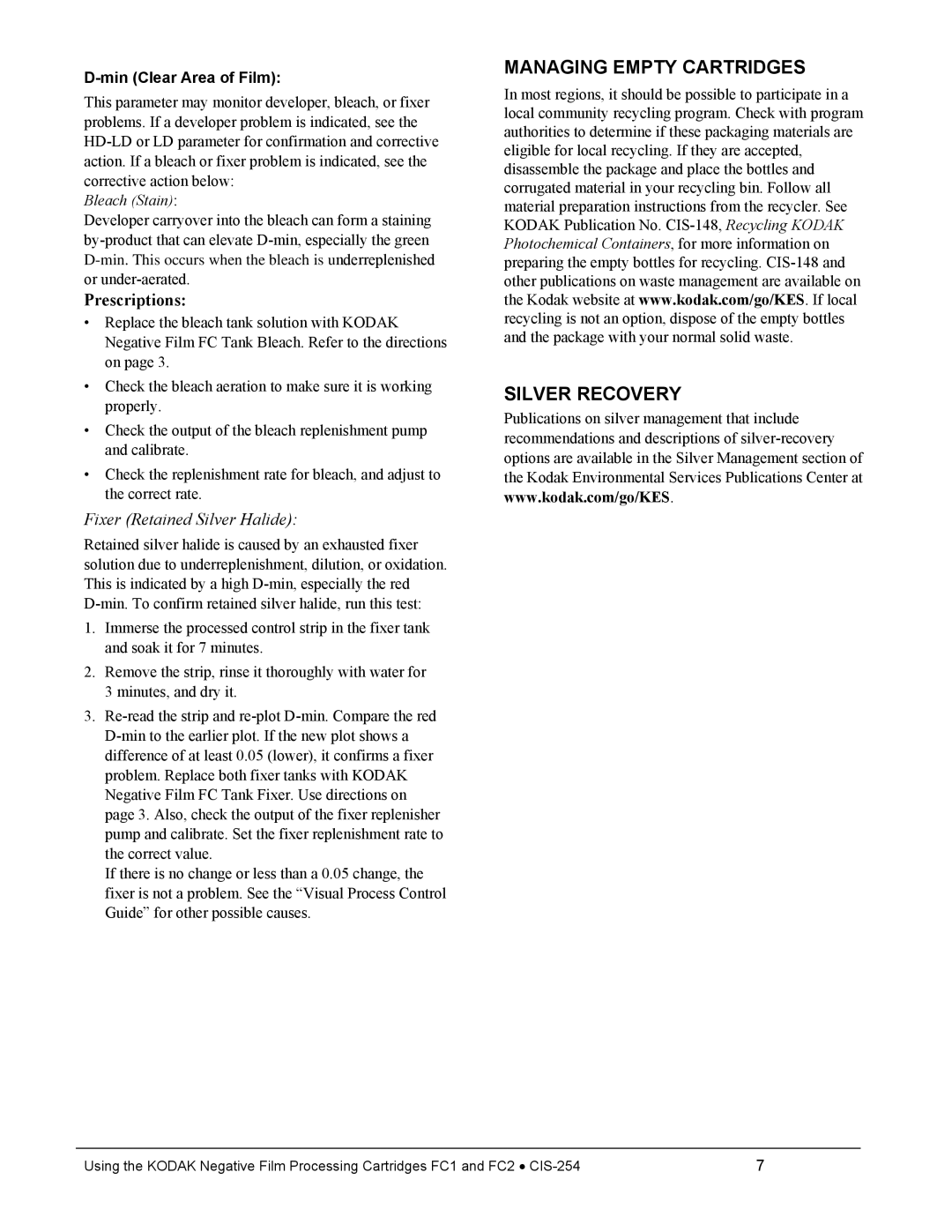D-min (Clear Area of Film):
This parameter may monitor developer, bleach, or fixer problems. If a developer problem is indicated, see the
Bleach (Stain):
Developer carryover into the bleach can form a staining
Prescriptions:
•Replace the bleach tank solution with KODAK Negative Film FC Tank Bleach. Refer to the directions on page 3.
•Check the bleach aeration to make sure it is working properly.
•Check the output of the bleach replenishment pump and calibrate.
•Check the replenishment rate for bleach, and adjust to the correct rate.
Fixer (Retained Silver Halide):
Retained silver halide is caused by an exhausted fixer solution due to underreplenishment, dilution, or oxidation. This is indicated by a high
1.Immerse the processed control strip in the fixer tank and soak it for 7 minutes.
2.Remove the strip, rinse it thoroughly with water for 3 minutes, and dry it.
3.
If there is no change or less than a 0.05 change, the fixer is not a problem. See the “Visual Process Control Guide” for other possible causes.
MANAGING EMPTY CARTRIDGES
In most regions, it should be possible to participate in a local community recycling program. Check with program authorities to determine if these packaging materials are eligible for local recycling. If they are accepted, disassemble the package and place the bottles and corrugated material in your recycling bin. Follow all material preparation instructions from the recycler. See KODAK Publication No.
SILVER RECOVERY
Publications on silver management that include recommendations and descriptions of
Using the KODAK Negative Film Processing Cartridges FC1 and FC2 • | 7 |
